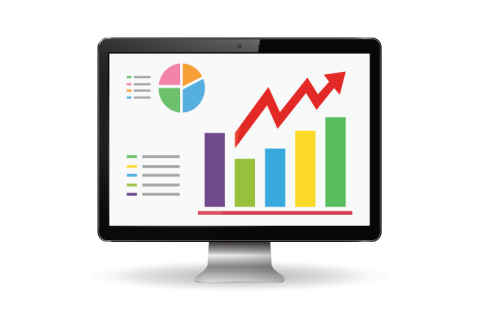Do You Know Your Numbers?

t’s very important to keep track of how your company is performing. From how much you are making in sales to operational costs and overheads, it’s crucial you know what money is coming in and going out, and for what reasons.
Getting the numbers together may seem like a daunting task at first but it will definitely help you move your business forward. Unfortunately, many people only look at their accounts by the end of the financial year, or even 6 to 7 months later when the accountant completes their tax return. By the time they get a chance to review it, they are looking at last year’s financial report. If there was a need for immediate action, by then it’s too late.
The best way forward is to get into the habit of checking your numbers more often – ideally at least once a month. This enables you to see what is working, making changes quickly, without losing both time and money on things that are otherwise not working for your business.
Key Numbers:
We all understand that knowing the numbers of your business is important, but what numbers should we actually be looking at? How should we be tracking the business?
If you can find the answers to the below questions then that will be a good starting point.
- How much have you invoiced?
- How much have you been paid?
- What are the outstanding invoice amounts?
- Which invoices are outstanding?
- Which jobs haven’t been invoiced yet?
- How many jobs have you done?
- How many invoices have you created?
- How many quotes have you done?
- How many of them have been accepted?
You can then compare these to how your business did at the same time last year. You are looking for changes and trying to link them with actions to find out what is working the best.
Know Your Profit and Loss (P&L):
Your P&L gives a very good overview of the health of your company and can be tracked easily. If you have a bookkeeper or accountant doing your accounts then just ask them to send you a monthly summary of your P&L.
The other option is that you can track it with a spreadsheet, in applications such as Excel, or any accountancy package, so you can then easily generate the reports whenever you require it.
If your accountant uses an online accounts package and keeps it up to date then you can also access it to get the information you require.
Try putting expenses in the categories relevant to you; this will give you a quick and easy way to find a summary of what is happening in your business and you can see what worked and what didn’t.
Where is Your Business Coming From?
Knowing where your customers come from really helps pin down what marketing is working the best and also where you can find more customers.
The below questions will help you understand your marketing and your customers better.
- How many potential customers did you get?
- How many of them became a new customer?
- Where did they come from?
- How much did you spend to get that customer?
- How much did you spend per marketing strategy?
- How many existing customers used your services again?
When making conclusions and plans based on the reports, consider the 80 – 20 rule; probably 80% of your revenue comes from 20% of your marketing spend. Focus on the 20% marketing strategies that work and ditch the rest.
Where is Your Business Going?
There needs to be a balance in everything.
If you can get into the habit of making one improvement every month and checking the results the following month then you will find it will make massive differences overtime.
Profit and Loss is a great tool to see where you are. P&L is about past performance which means you can look at last year’s overheads and see if you can reduce cost.
The other part of the equation is sales and marketing, which is more about investing in and finding the methods and messages that work the best.
Think of your research and planning like you would look at a map. If you want to get somewhere, first you need to find where you are on the map, look at your profit and loss. Then decide where you want to go, set some goals and targets and use the marketing to get there.
Finally, commit to the best ways to get there and work on strategies. Take the time to know your numbers and watch as your business moves forward to bigger and better!
Note: This Article is Originally Published in Registered Gas Engineer Magazine – Issue 107, February 2018

